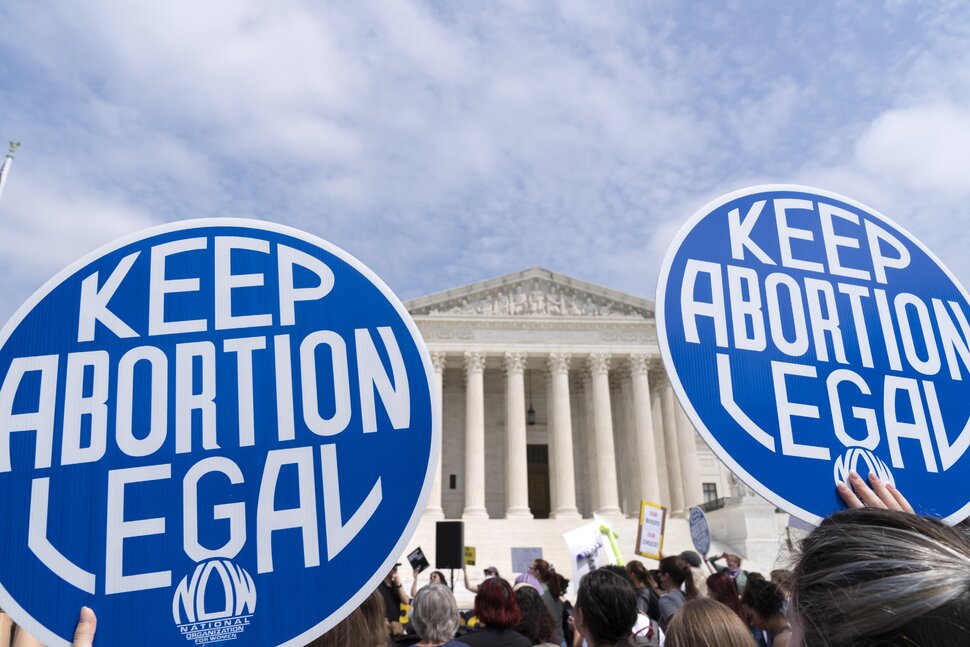Roe v. Wade got it right

Legal History
The Supreme Court decision Roe v. Wade (1973) examined in depth the legal history of abortion.
“It perhaps is not generally appreciated that the restrictive criminal abortion laws in effect in a majority of States today are of relatively recent vintage. Those laws, generally proscribing abortion or its attempt at any time during pregnancy except when necessary to preserve the pregnant woman’s life, are not of ancient or even of common law origin. Instead, they derive from statutory changes effected, for the most part, in the latter half of the 19th century.”
Roe v. Wade, 410 U.S. 113 (1973), P. 129
English common law held that abortion before “quickening,” or first movement at 16 to 18 weeks in the 2nd trimester, was not a crime. (Roe, P. 132) American law in most States until the mid-19th century was English common law. (Roe, P. 138) After the Civil War the evangelical Second Great Awakening (1795-1837) led to an increase in missionary and other moral organizations devoted to cleansing sin and evil. (William Novak, The People’s Welfare: Law and Regulation in Nineteenth-Century America, University of North Carolina Press, 1996)
Personhood
The Catholic Church identified quickening as the beginning of a life with a soul, based on the writings of Augustine of Hippo (5th century) and Thomas Aquinas (13th century). (Roe, P. 133-134) But Augustine also said that it was impossible for humans to be certain when that change occurs in fetal development. (Roe, P. 132 Footnote 20) The Catholic Church eventually changed its teaching on the beginning of life from quickening to conception by papal encyclicals, temporarily in 1588 and finally in 1689. (Brind’Amour, Katherine, “Roman Catholic Church Quickening“. Embryo Project Encyclopedia(2007-11-11). ISSN: 1940-5030.)
According to the Court the only credible argument against abortion in 1973 was whether the State had a duty to protect prenatal life. This justification rests on the belief that a new human life is present from the moment of conception. (Roe, P. 150 and Footnote 45) The Court held that “person” as used in the Fourteenth Amendment did not include the unborn. (Roe, P. 158 and Footnote 55)
My personal opinion is that Roe rightly avoided making religious dogma into public law. A person from the moment a sperm fertilizes an egg? That’s your religious belief, not mine.
The Court decided that abortion could be regulated after viability at 6-7 months in the 3rd trimester to protect potential human life, with an exception for preserving the life or health of the mother. (Roe, P. 164)
A living but unborn cell, sperm, egg, embryo, or fetus is not a person. Only a fetus that is viable and can live outside the uterus can be a person. This begins at about 24 weeks, or the start of the 3rd trimester:
“Today, the prospect of survival is only about 1 in 10 at 23 weeks, and if the child lives it is more likely to be handicapped than not. At 24 weeks the chance of a normal survivor is about 50%, and after this the odds are in favor of a normal survivor. Considering this data, intensive care should be an optional choice for fetuses at 23 and 24 weeks of gestation and should be offered to every fetus at 25 weeks or more.”
(“Limits of fetal viability and its enhancement,” G. H. Breborowicz, Jan 5, 2001)
Data from 2008-2011 shows infant survival rates without neurological damage of 1% at 22 weeks, 13% at 23 weeks, and 32% at 24 weeks. (Noelle Younge, M.D., M.H.S. et al., “Survival and Neurodevelopmental Outcomes among Periviable Infants,” N Engl J Med 2017; 376:617-628, February 16, 2017)
Science is still validating Roe v. Wade‘s viability standard 44 years after the decision.
Biographical life is more important than biological life. And all the legislators passing 6-week abortion bans should research Pulseless Electrical Activity and viability. Because no fetus has a pulse from its own heart at 6 weeks. (“Guide to Language and Abortion,” American College of Obstetricians and Gynecologists, 2023)
Some Other Thoughts
No Exceptions for Rape, Incest, or Minors
Republicans passing state abortion bans claim that they value the unborn fetus and mother equally. But for rape, or incest, or minors, or nine months of carrying an unwanted child, the laws value the fetus over the mother. And incredibly it doesn’t matter if the unborn fetus is dead. This is a state-by-state review of the post-Roe landscape: “Abortion ruling prompts variety of reactions from states.” (Associated Press, July 21, 2022)
Pro-Birth, Not Pro-Life
Methodist Pastor Dave Barnhart in Birmingham, Alabama has written a viral social media post explaining that “the unborn” is a convenient group to support, because you can forget them after they are born. They don’t threaten your wealth, power, or privilege. They are perfect if you claim to love Jesus but actually dislike people. (Dave Barnhart, Facebook, June 25, 2018)
Male Pregnancy
There is the Judith Jarvis Thomson thought experiment that allows men to consider pro-birth legislation as the equivalent of forced organ donation, if the donation took 9 months. (Thomson, Judith. [1971] “A Defense of Abortion”. Philosophy and Public Affairs 1 (1):47-66) Critics call the comparison contrived and quibble about details, but I side with the comment by Gloria Steinem: “If men could get pregnant, abortion would be a sacrament.” (Emma Brockes, The Guardian, 17 Oct 2015) Or at least legal and free.
Reply
You must be logged in to post a comment.